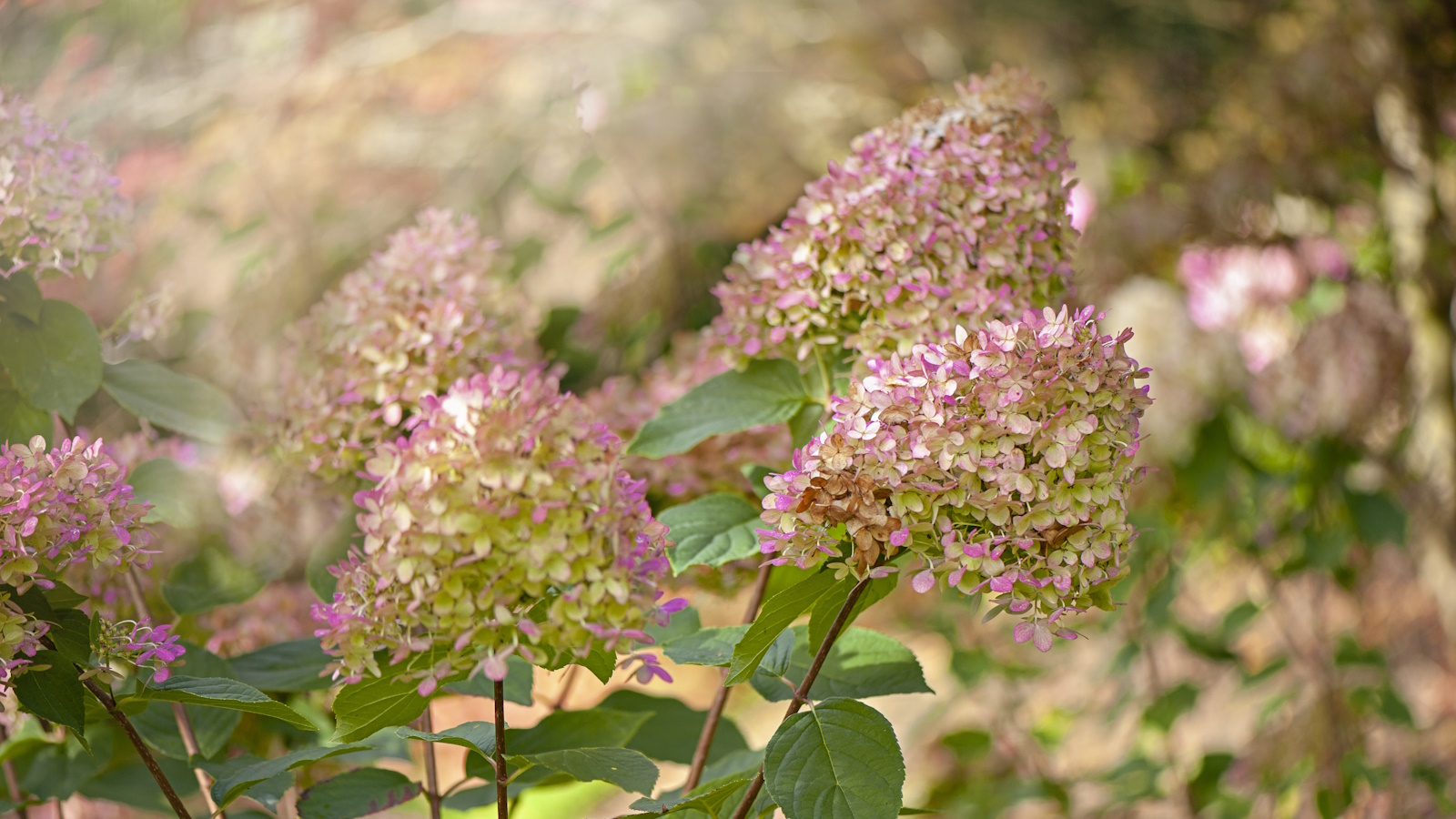
Hydrangeas are one of those rare flowering shrubs that arguably look even better in the fall than they do in the height of summer. Granted, it's subjective, but for me watching the bombastic blooms of my hydrangea paniculata 'limelight' fade from cream and lime into muted blush and burgundy is a quintessential sign the seasons are shifting.
When it comes to hydrangea growing, these backyard favorites are not overly demanding, but they do have very specific pruning requirements. So, as the flowers and foliage begin to fade, many gardeners will be wondering what to do with hydrangeas in fall - if anything at all?
I have spoken to hydrangea experts to find out the answers, plus highlighted two things never to do with your hydrangeas in fall, to make sure you have healthy plants and large, long-lasting flowers next year.
1. Add mulch and compost, but not too much
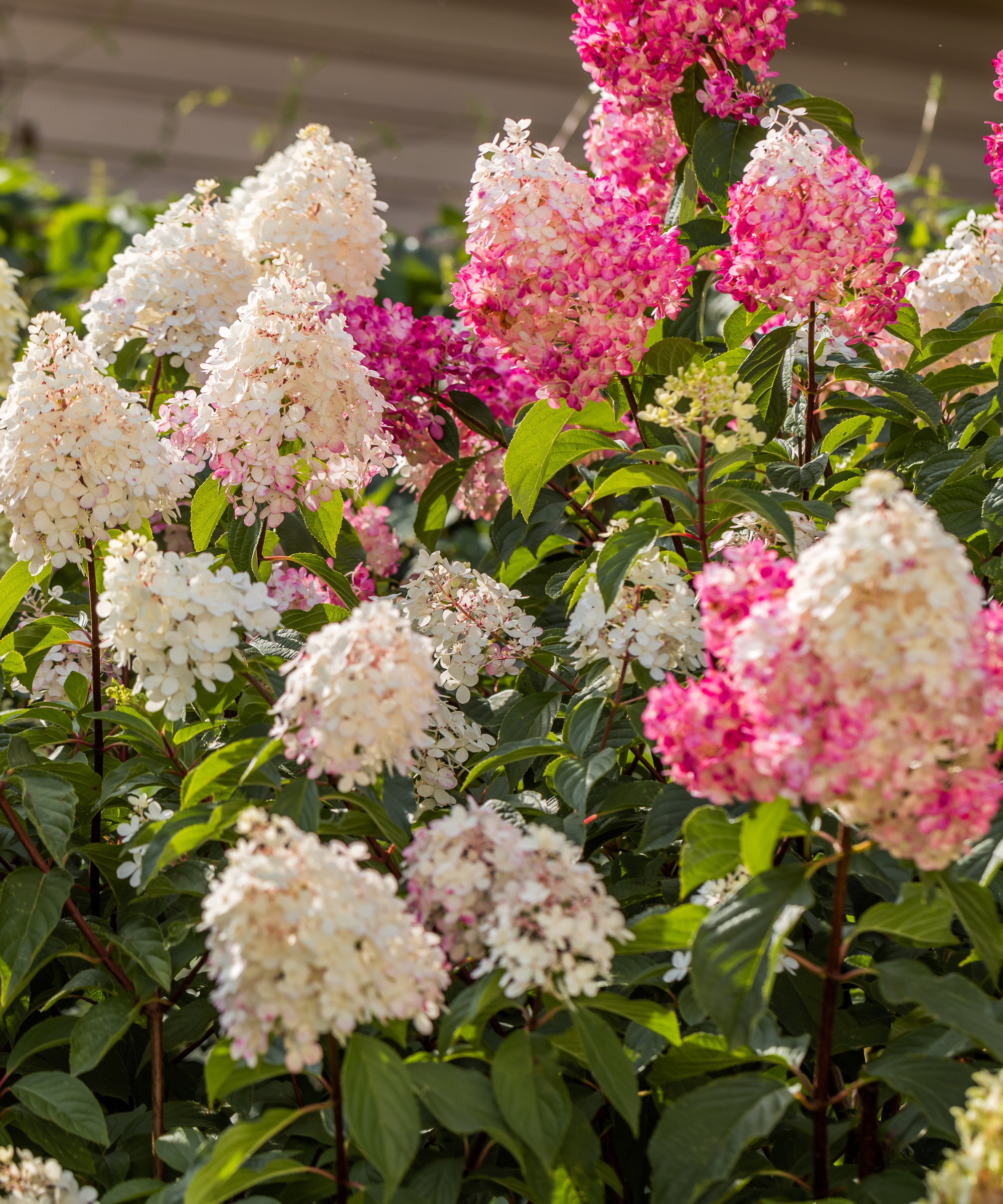
Mulching is always a good idea as it will help insulate your hydrangea plants, as well as keep the weed growth under control.
Hydrangea expert Lorraine Ballato adds, 'If plants showed signs of drought stress [during the growing season], I would add compost to increase the water retention ability of the soil and more mulch for insulation.'
Gardening expert and writer Janet Loughrey says, 'In colder climates, a fall mulch will help protect the root zone from hard freezes and freeze-thaw cycles.
'Apply a 2 to 3 inch layer of bark chips, such as this pine mulch from Amazon, or other mulch around the base of hydrangea plants. Avoid placing bark against the trunk, which can make plants more susceptible to pests and diseases.'
2. Only cut back hydrangea varieties that flower on new wood
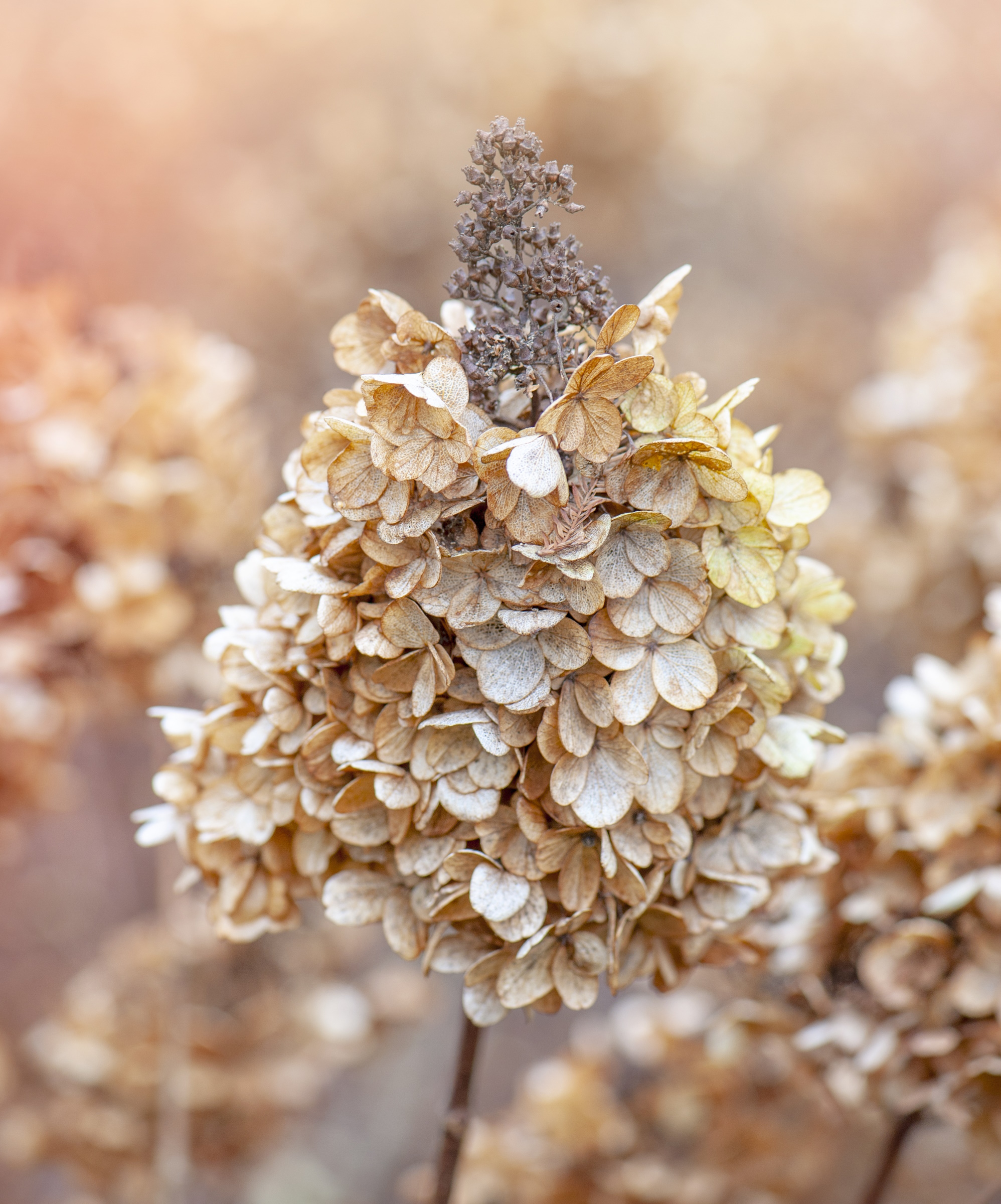
There are only a few hydrangea varieties that can be cut back in the fall, and it's important to leave the rest.
'Once the plants go dormant and have dropped their leaves, you could cut back the varieties that flower on new wood only - these are arborescens and paniculata hydrangeas,' says Lorraine Ballato. Common examples are 'Annabelle' and 'Limelight'.
Spent flower heads can also be removed to just below the base of the head, or left for winter interest.
3. Winterize hydrangeas if the conditions require it
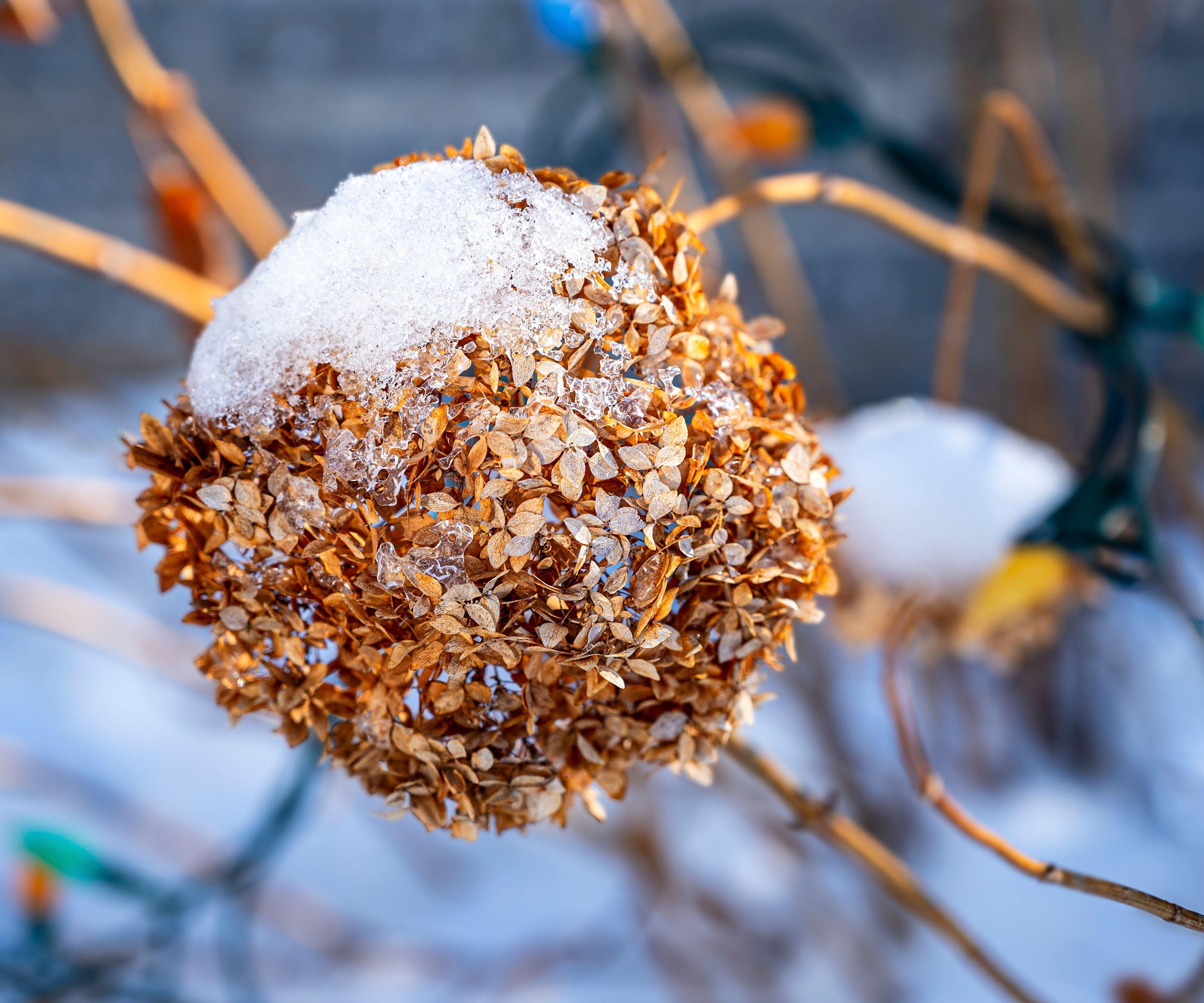
Lorraine says: 'Winterizing hydrangeas is recommended if your big leaf hydrangea is in a marginally hardy zone or if it is exposed to winter weather like icy storms and heavy snow. Oak leaf, mountain, and climbing varieties aren't as susceptible to winterkill.'
Hydrangeas in colder climates that produce flower buds on old wood may benefit from being wrapped to avoid freeze damage to buds. You can insulate shrubs with burlap, available on Amazon, landscape fabric or row cover if you have larger shrubs - this plant cover from Amazon would be ideal.
Janet Loughrey says, 'In deer prone areas, cover plants or apply a repellent to avoid damage from grazing. Plants are most susceptible in early spring when food sources are scarce.
'In colder areas, move potted hydrangea plants against your home and protect with insulation to prevent the root zone from freezing. They can also be moved into an unheated garage or other cool room,' she adds.
It is also wise to make sure plants are well watered before winter cold sets in. Plants that are underwatered may produce fewer or smaller flowers the following year.
4. Check for diseases and leaf spots
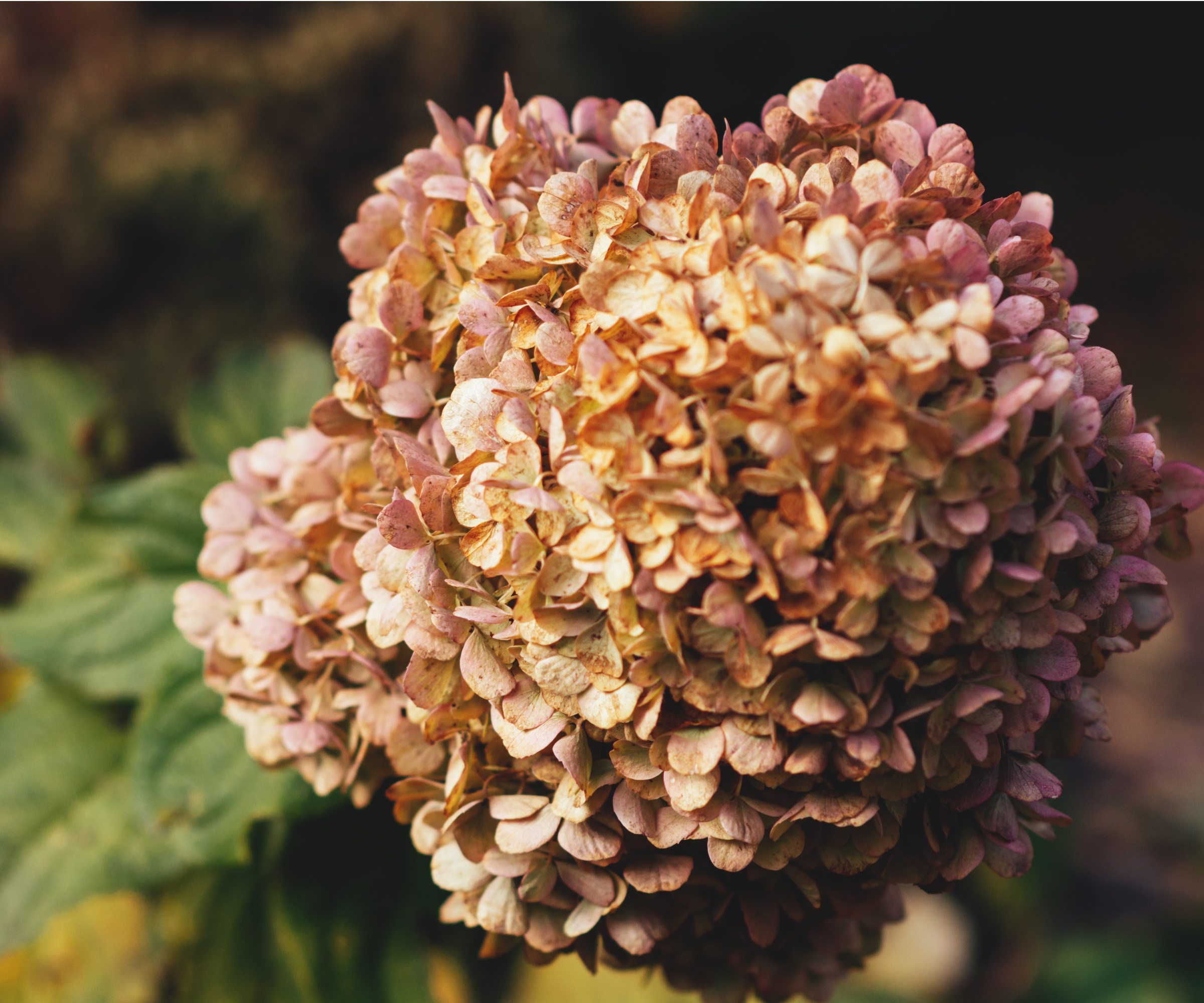
Another important thing to check for at this time of year is whether you hydrangeas have any leaf spot issues.
'Leaf spots are usually a sign of a fungal infection,' explains Lorrain Ballato. 'If that is the case, garden sanitation and clean up at the end of the season is critical. Fungal spores overwinter quite well, regardless of how low the temperatures get. When the conditions are right again next year, they will come back to life and reinoculate the plant.'
Lorraine advises removing and trashing all fallen leaves. Depending on how severe the issue is, you could also replace all the mulch since the spores like to spend the winter there. Disinfecting all tools is also necessary for the same reasons.
5. Cut long hydrangea stems for drying
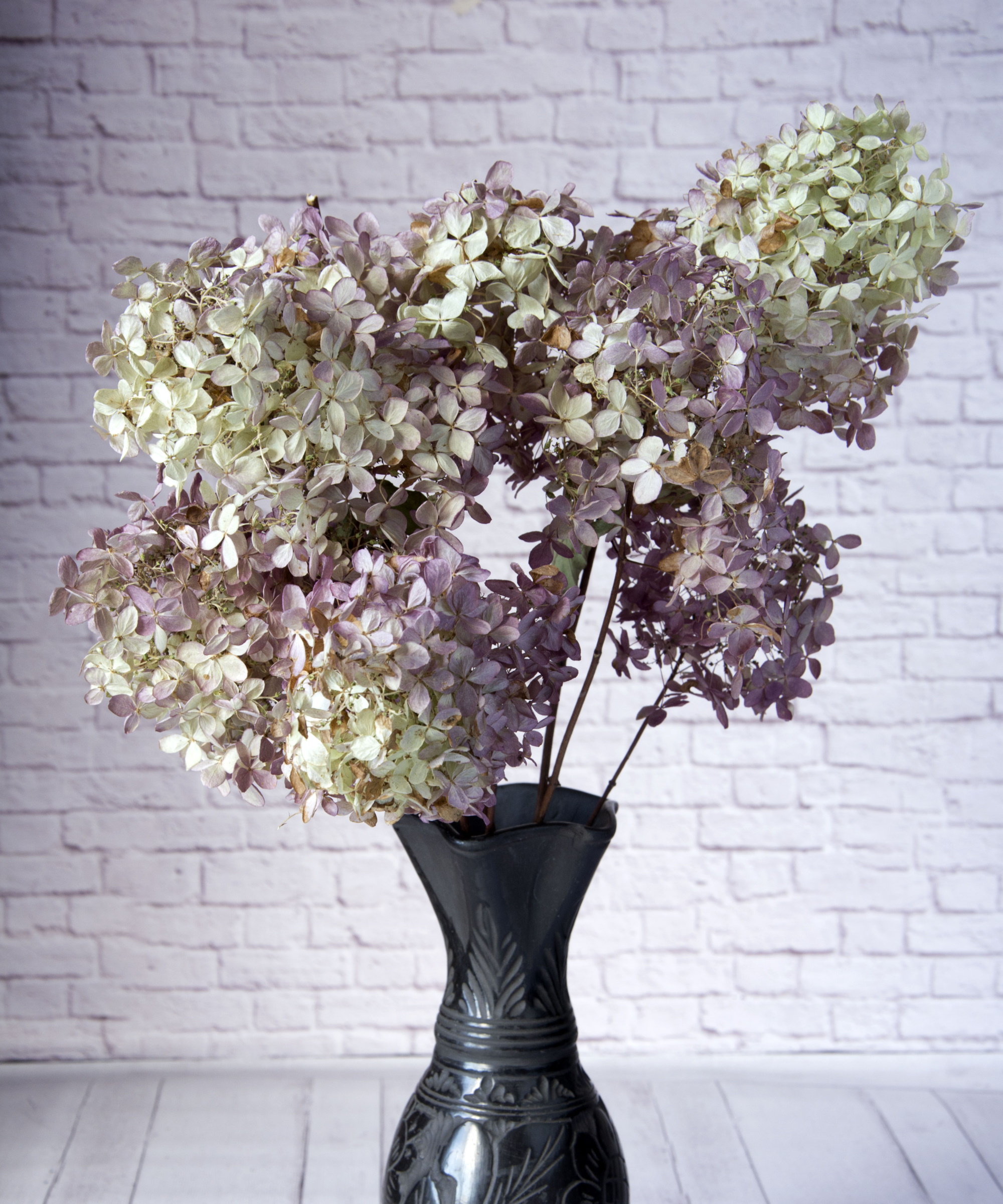
Why not bring a few cut hydrangea stems into the house in fall and dry them to create a permanent, seasonal display?
Cut stem lengths of between 40-50cm, and simply place them in a vase of your choice in a little water. Allow the water to evaporate over time, and your hydrangeas will dry beautifully in situ, without you needing to do anything else.
2 things never to do with hydrangeas in the fall
When it comes to knowing what to do with hydrangeas in the fall, there are also a couple of things to never do. Doing the following could seriously harm your shrubs, and put the following year's flowers in jeopardy.
Pruning any old wood
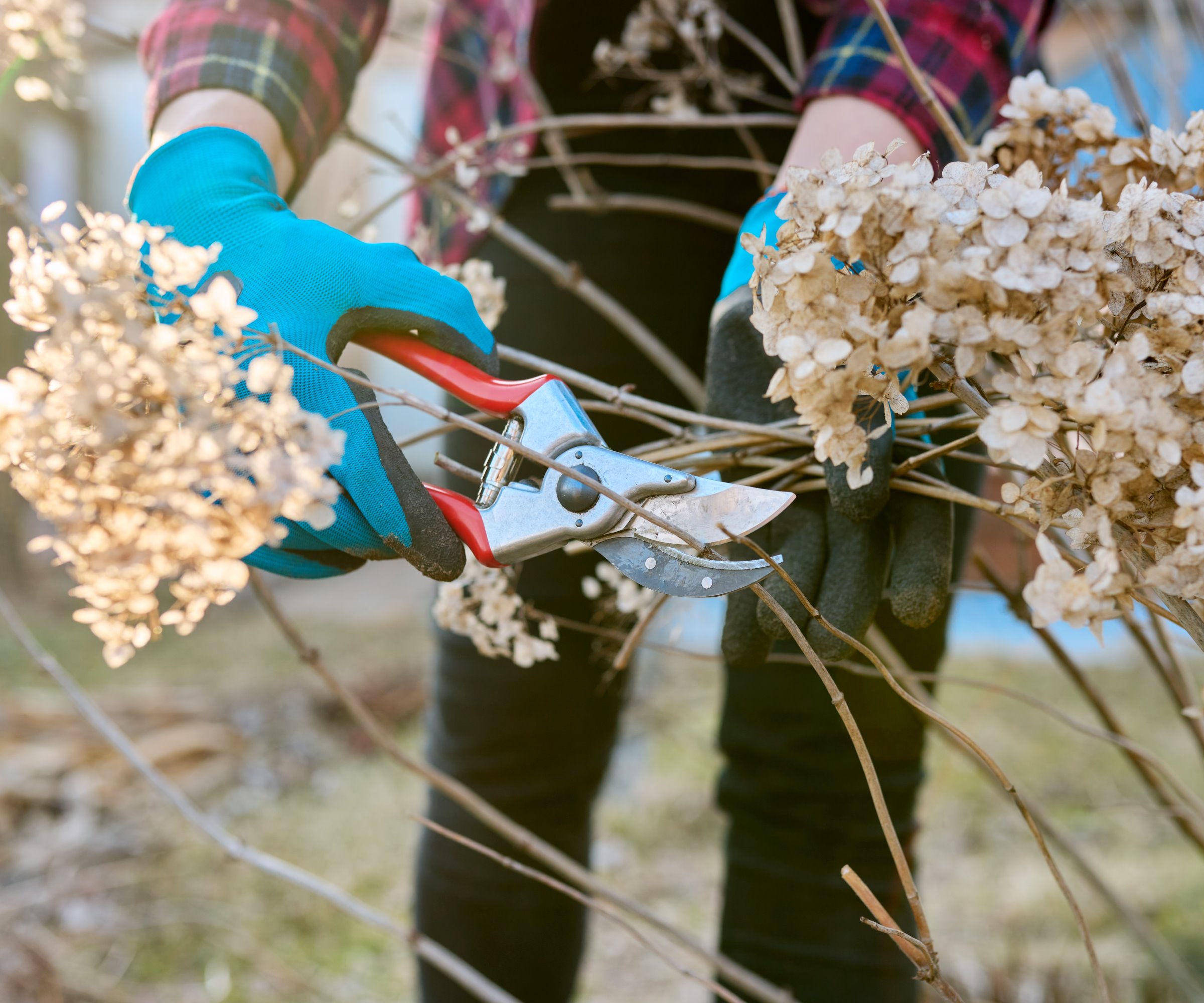
It is vital not to prune any old wood from your hydrangeas. Doing so would be a big hydrangea pruning mistake.
'That applies to all big leaf hydrangeas (macrophyllas) as well as oak leaf (quercifolias), mountain (serratas), and climbing (petiolaris and schizophragma) varieties. If you don't know what you have, do nothing,' advises Lorraine Ballato.
Janet Loughrey agrees, explaining that plants that bloom on old wood, such as bigleaf, mophead and oakleaf hydrangeas form flower buds in late summer. 'Pruning in fall will remove buds, resulting in no flowers the following year.'
She adds: 'Annabelle and peegee hydrangeas, that flower on new spring growth, can be stressed by fall pruning, making them more susceptible to winter damage, pests and diseases. Deadheading too late in the season may result in stress and winter damage.'
Fertilizing
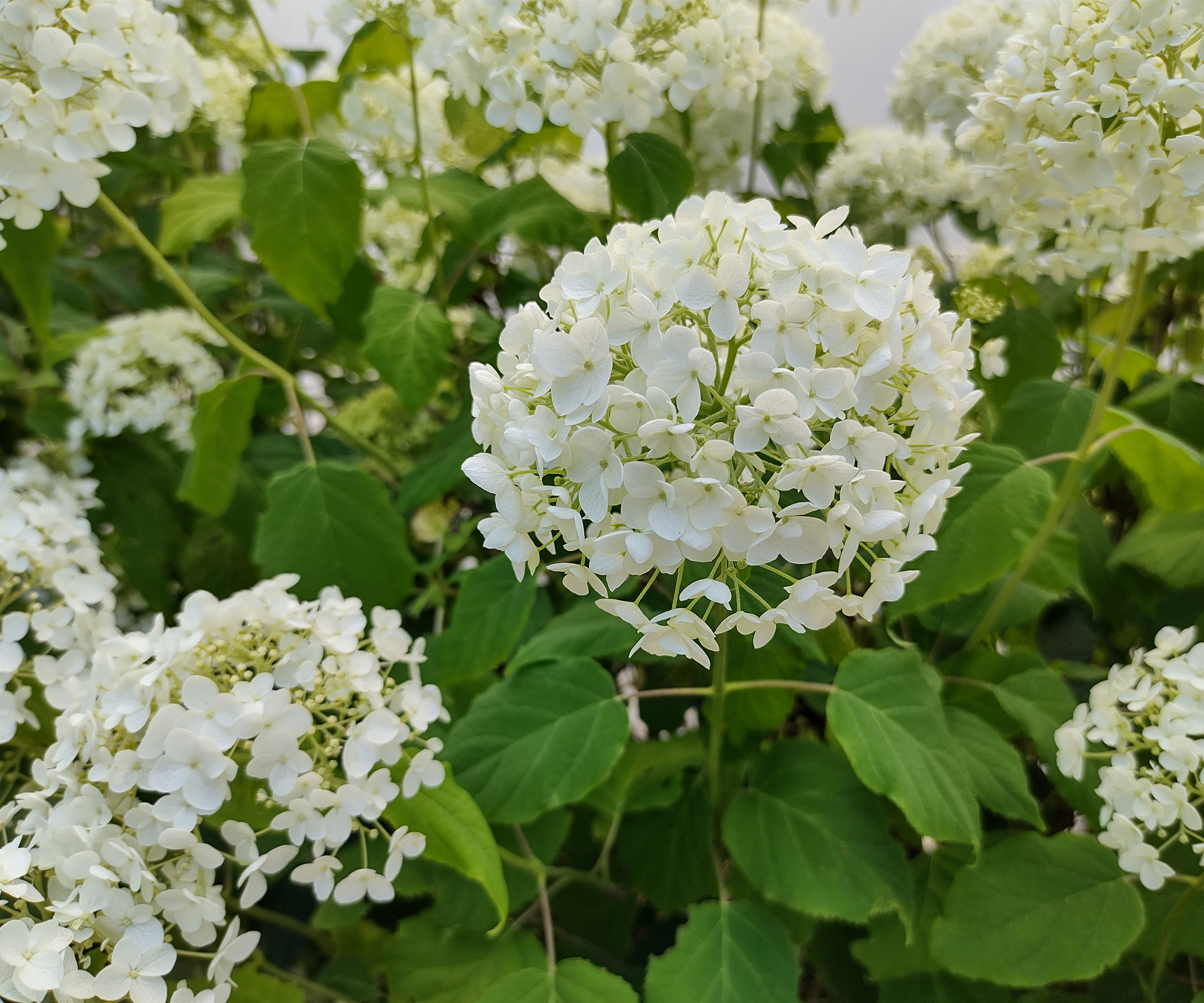
Lorraine Ballato advises against any hydrangea fertilizing, unless you live in the Southern hemisphere. 'Fertilizing and pruning are two actions that will stimulate a hydrangea, and fall is the time you want it to go to sleep and enter dormancy,' she says.
Janet Loughrey agrees, adding, 'Fertilizing in fall will stimulate new growth that will be killed by a hard freeze, making plants more susceptible to stress and cold damage.'
The best time to fertilize hydrangea plants is in spring, as new growth begins to emerge.
I would always say one of the best things you can do for your hydrangeas in fall is simply to admire their beautiful flower heads changing, watching as they work hard to maintain interest and color in the yard even as the weather gets colder. Perennials such as black-eyed Susans and coneflowers do the same, making them amazing value in the garden right through the winter.







